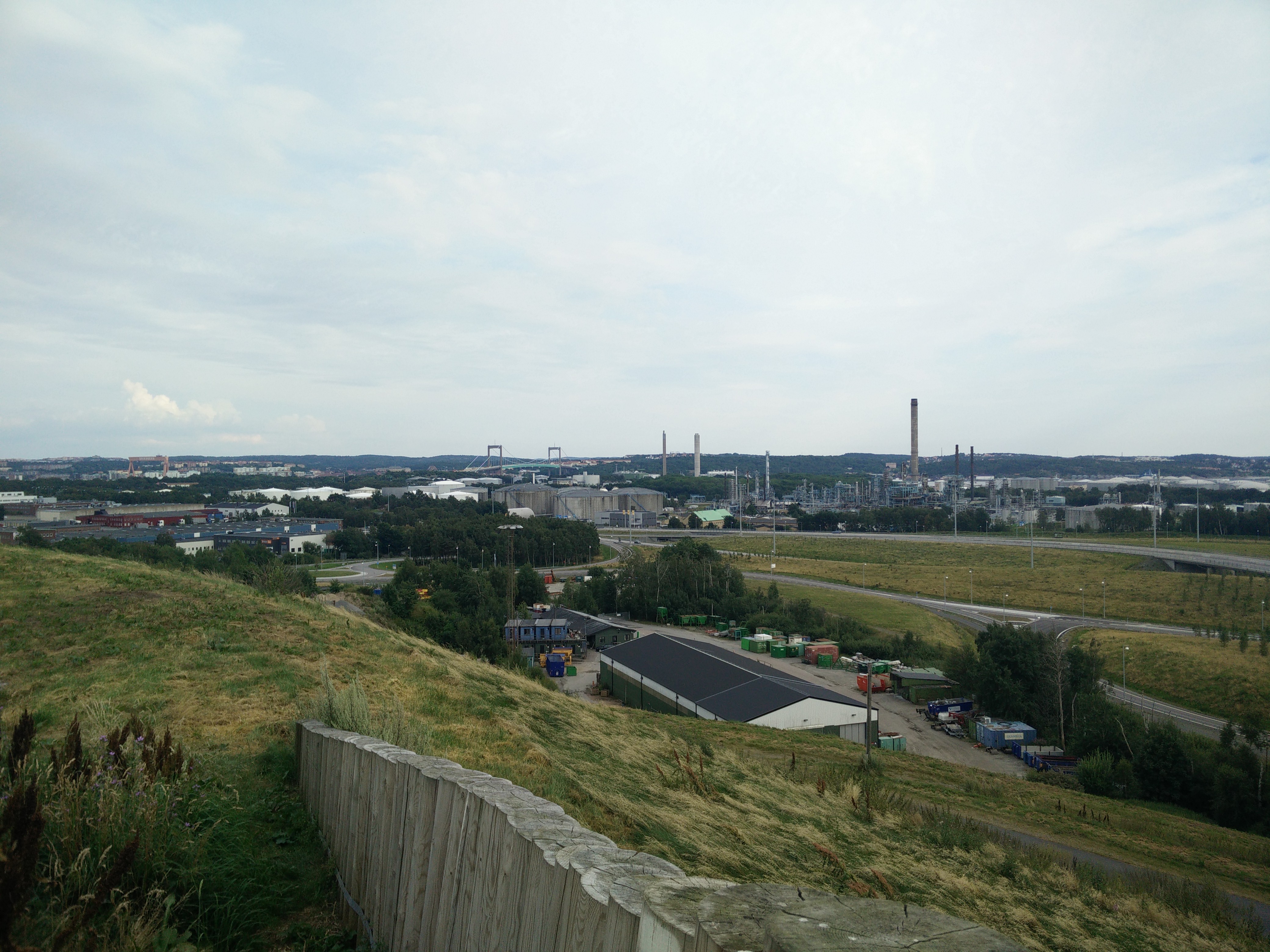Sweden, Göteborg
FC-01x Future Cities (Self-Paced) - Exercise 1 : "Making the Invisible - Visible"

Uploaded on 2016-08-08 by Alex Andersson
a) The picture is taken from a hill overlooking the industrial parts of the canal that passes through Gothenburg in Sweden. On the right of the picture the river entrence of the canal is visible aswell as the famous archipelago of the west coast. However, what dominates the scenery is the industrial heritage of Gothenburg. This area remains industrial where most of the old factories and the central parts have been turned into offices, parks and housing. Starting from the bottom left we can observe a few things, two-three story factory/warehouse buildings with the blue roofs and the white walls. Most of the nearby buildings go into the same category. Beyond those we can see the white cisterns and some scatterd trees. I am not sure what they house, but I believe they are part of the refineries that are located further to the right. We cant quite make it out on the picture but the canal runs through the centre/middle of the picture. We see one of the two bridges that connect the city in the centre. Further to the left we see the orange metal construction which is part of one of the few remaining shipyards. Still further away we see the hills and housing that surrounds the city centre. Turning full stop and looking close to us we can see some sort of storage, I would guess it’s the municipalities. But it could also be part of one of the nearby industries, or a recent offshoot for a construction site. Further away we see a few roads and more scatterd grassmats and trees. Beyond there is more industries, cisterns and beaming exhaust towers. On the horizon of the top right of the picture we can finally see housing and more forests covering the hillside. b)So what invisible information can be observed in the picture? I would first suggest something possibly obvious, but I think it would be unfair not to include: The environmental effects both on a larger but more appropriately on the local scale of the refineries and industries. How do they effect the river/canal? How do they effect air quality? What is the social impact of maintaining industries at one of the most attractive locations in the city? In short what sort of externalities could be revealed through looking at the invisible information of this site. Secondly I would point at the bridge that seemingly connects the two sides of the city. How is it used? What types of traffic runs on it? Does connect the city and its inhabitants or is it used mainly for trucks and so on? These questions can be answered through analysing the bridge and following the flows of traffic. c)From the two examples I presented above I will try to approach my second one and describe how the invisible information can be turned into knowledge and contribute to the planning of a more liveable urban space. In cities there are always different types of barriers, something very obvious ones like a canal in the case of Gothenburg and sometimes in less visible forms like financial boundaries, poor infrastructure, tolls and so on. I believe these to be highly detrimental to how liveable the urban space becomes or not becomes. This happends in many complex ways, but I think primarily it severs social interaction between different areas of the city, it makes travelling to work difficult and it makes social interaction with friends and family more challenging. With that said, it is not always visible. But by focusing on this bridge in particular I think you will find the perfect microcosmos of how the different areas of the city are interconnected (or not so connected). On a more practical basis I think the knowledge could be subtracted through analysing the flows and makeup of the traffic both in terms of volumes and types, but also over the cycle of time. This knowledge could then be used to evaluate the situation of infrastructure in this region of the city – changes may or may not be needed, but this could be used as a solid buildingblock for understanding the urban space of the city as a whole.